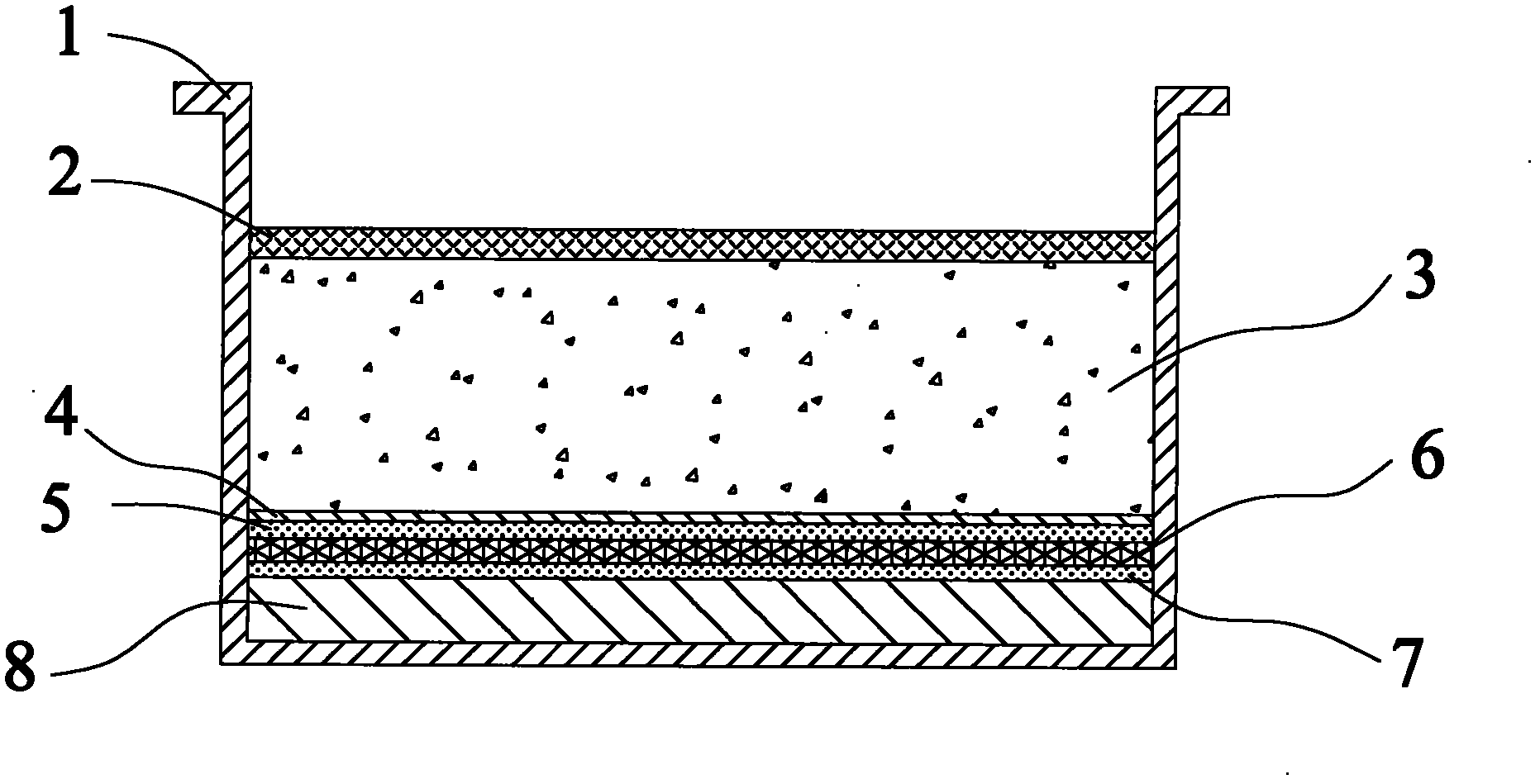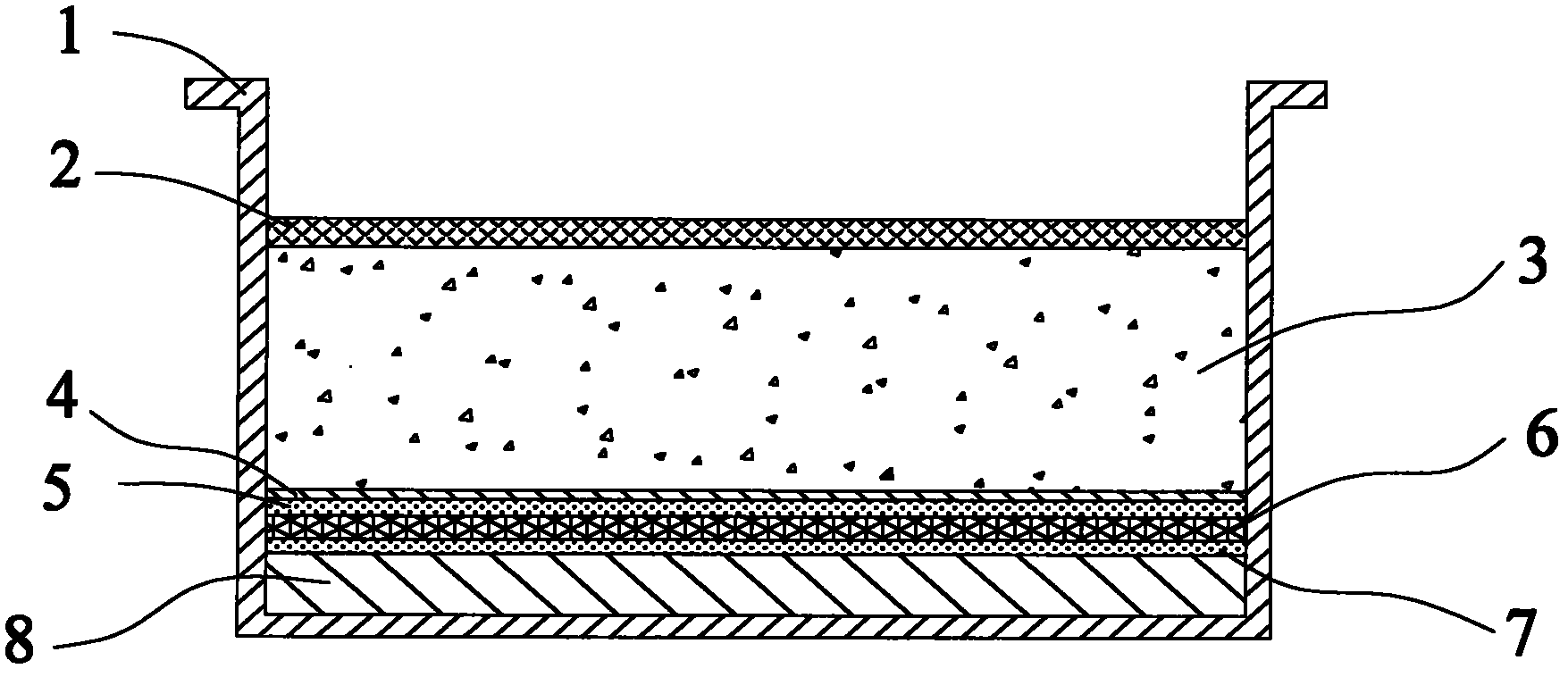Making method of soil monolith
A production method and specimen technology, applied in the field of soil research, can solve the problems of bulkiness, difficulty in long-term storage, inconvenient handling, etc.
- Summary
- Abstract
- Description
- Claims
- Application Information
AI Technical Summary
Problems solved by technology
Method used
Image
Examples
Embodiment 1
[0008] A method for making a soil sample, the steps of which are as follows: drilling treatment: drilling holes on the soil column, making 1 to 2 small holes per square centimeter, with a depth of 3 to 4 cm and a diameter of 0.5 to 1 mm, so that the entire The surface of the soil column is covered with small holes to increase the surface area; dipping treatment: lay the soil column flat, pour the impregnating agent in the middle of the soil column, scrape the impregnating agent to both sides of the specimen with a thin wooden board, and the impregnating agent is made of white latex and thinner composition (thinner can be water), the mass ratio of described white latex and thinner is 3: 7~4: 6, then, make the surface of soil sample keep one layer of paint layer, use white latex next day: dilute The mass ratio of the impregnating agent is 1:1 to impregnate the soil for the second time, and then soak it with undiluted white latex after three days; Paste the sackcloth: After the so...
Embodiment 2
[0010] 1. Drying treatment: Lean the collected soil column against the wall and let it dry naturally. Generally, it takes a few days to a week to dry.
[0011] 2. Glue dipping treatment: Lay the soil column flat, pour the impregnating agent in the middle of the soil column on one surface of the soil column, and scrape the impregnating agent to both sides of the soil column with a thin wooden board, but the impregnating agent should not flow to the soil column. Go to the seam of the box on both sides. The soil should be thoroughly soaked for the first time. Then, keep a layer of paint on the surface of the soil sample. The next day, use a thicker impregnating agent (50% white latex and 50% thinner. The thinner can water) soak the soil for the second time, and then soak it with undiluted white latex three days later.
[0012] 3. Paste the sackcloth: After the soil column is impregnated with the last raw glue, immediately spread a piece of sackcloth on it, and paint it repeatedly...
PUM
 Login to View More
Login to View More Abstract
Description
Claims
Application Information
 Login to View More
Login to View More - R&D
- Intellectual Property
- Life Sciences
- Materials
- Tech Scout
- Unparalleled Data Quality
- Higher Quality Content
- 60% Fewer Hallucinations
Browse by: Latest US Patents, China's latest patents, Technical Efficacy Thesaurus, Application Domain, Technology Topic, Popular Technical Reports.
© 2025 PatSnap. All rights reserved.Legal|Privacy policy|Modern Slavery Act Transparency Statement|Sitemap|About US| Contact US: help@patsnap.com


